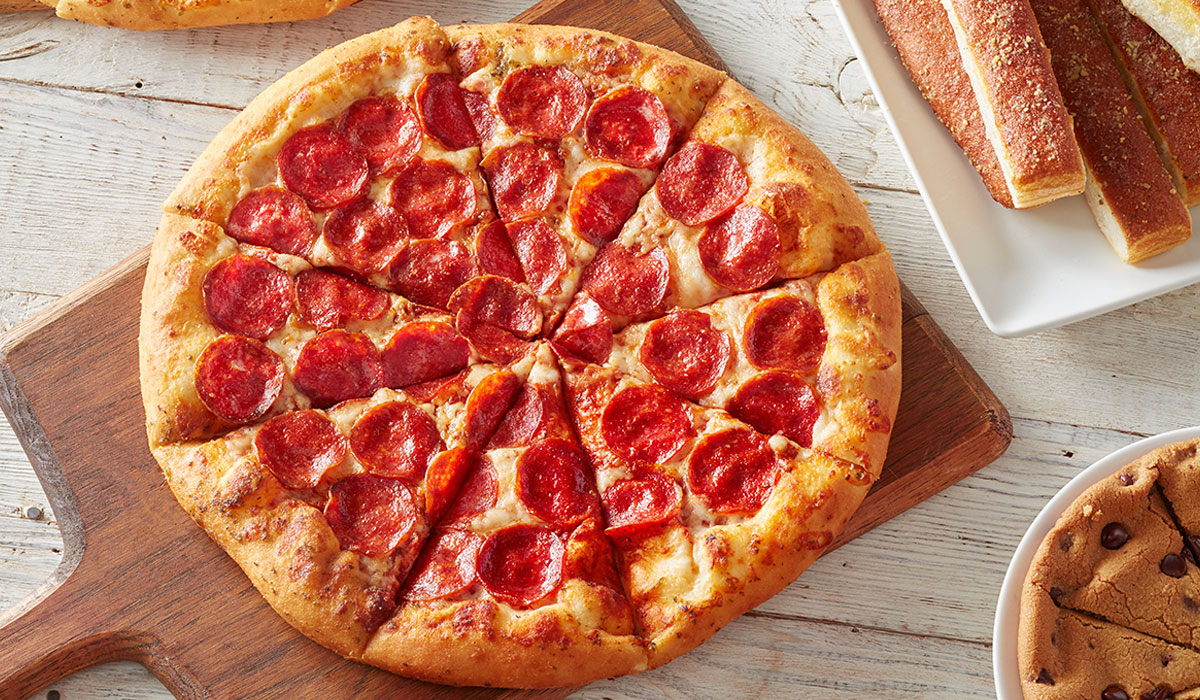Pizza Hut didn’t provide exact figures, but called its acquisition of ordering provider QuikOrder one of the largest in the company’s history. It could also turn out to be one of its most pivotal.
QuickOrder was founded in 1997 and has worked with the YUM! Brands chain for close to two decades. Pizza said the deal, announced December 4, would improve its ability to deliver “an easy and personalized online ordering experience and accelerate digital innovation across its base of more than 6,000 restaurants in the U.S.”
In 2018, Pizza Hut said about half of its U.S. sales were processed through QuikOrder’s platform. The online order ordering software and service provider specializes in developing and maintaining internet-ordering systems used across quick service. Pizza Hut added that QuickOrder built an expert team curated to meet Pizza Hut’s needs over the past 20 years. The acquisition will include: Pizza Hut’s current digital ordering platforms, systems and services and QuikOrder’s in-restaurant technology and ancillary services, as well as its future generation products and programming.
“We’re doubling down on our commitment to digital and this deal positions Pizza Hut perfectly for the future,” said Artie Starrs, president of Pizza Hut U.S., in a statement. “We’re also gaining access to an immensely talented group of developers and digital innovators. Together we can more quickly provide breakthrough products and convenient services to our customers that will allow for better franchise economics over the long term.”
READ MORE: Red Roofs are haunting Pizza Hut’s sales.
Pizza Hut said the deal would provide it with greater flexibility and efficiency, and builds on improvements made during this past year, including: entering into its Transformation Agreement with its franchisees, focused on improving operations and accelerating technology enhancements and e-commerce capabilities.
Digitally, Pizza Hut introduced a range of online ordering tools this past year, such as a delivery tracker with text alerts, easy order options through voice-enable digital assistants and social, and Hut Rewards, which is the only national program that rewards members for every dollar spent on food online.
“Yum! is always looking for ways to make our brands more distinctive, relevant and easy for customers who want delicious food at an irresistible value,” added Greg Creed, YUM! Brands CEO, in a statement. “The acquisition strengthens the brand’s digital roadmap and innovation and aligns with the strategy we put in place to drive Pizza Hut’s growth. We’re excited by the opportunity this acquisition presents, and the future potential to scale QuikOrder’s technology across the YUM! family.”
The acquisition is expected to close this month. “We’ve enjoyed a long and successful partnership with Pizza Hut and I couldn’t be more pleased by this next phase of our relationship,” said Jim Kargman, QuikOrder CEO. “Technology and innovation are the backbone of this business and I’m excited by what the future holds.”
The deal comes during a key digital race in the pizza space. Domino’s has gained ground in recent quarters and years as it continues to progress toward what it hopes will be a 100 percent digital experience. Domino’s posted domestic same-store sales growth of 6.3 percent in the third quarter, marking the 30th consecutive quarter of positive comps growth.
And it continues to gain market share. In 2017, the company said it had 17 percent of the total quick-service pizza market share. Other major pizza chains accounted for 31 percent, and regional chains and independents made up 52 percent. In regards to pizza delivery market share, Domino’s held 29.3 percent. Major brands had 28 percent and regional chains/independents accounted for 43 percent.
Domino’s currently delivery dollar share is the highest it’s been in that span.
- 2011: 21.9 percent
- 2012: 22 percent
- 2013: 23 percent
- 2014: 24.4 percent
- 2015: 26.7 percent
- 2016: 27.2 percent
- 2017: 29.3 percent
Pizza Hut, meanwhile, is in the thick of a $130 million transformation that has showed progress, but remains a slow grind. In Q3, Pizza Hut’s sales crawled 1 percent internationally, year-over-year, and declined 1 percent in the U.S. Its comps fell 3 percent internationally and climbed a point stateside to get to positive 2 percent year-to-date.
“As we have consistently discussed, the Pizza Hut U.S. turnaround will be a slow build and we are encouraged by the foundation that’s been put in place and continue to make strides to improve the brand’s position,” Creed said in October.
At YUM!’s investor day Wednesday, Starrs said he was “extremely dissatisfied” with Pizza Hut’s performance, pointing to its dine-in assets and lack of delivery awareness as a challenge. YUM! said Pizza Hut’s international dine-in assets would be cut to about 25 percent in the next three to five years from 42 percent. The U.S. is going to see a comparable change.
At this point, 90 percent of new units are built to the “Delco” model, which is a smaller layout with a lower investment point geared toward delivery and carryout. About half of Pizza Hut’s sales are coming from dine-in globally, Creed said in October. Dine-in business is down to less than 10 percent of U.S. sales at Pizza Hut.
“We want to give everybody the clear signal that we do have a plan to migrate out of those dine-in stores, but we thought it was important to highlight frankly that the delivery carryout business at Pizza Hut International is actually fairly healthy,” Creed said. “That business is doing well, but the results we report don’t show the success that we’re having in that part of the business.”










